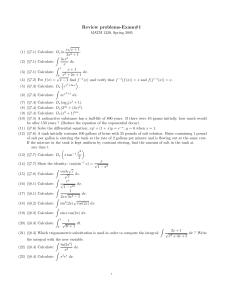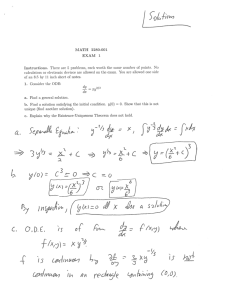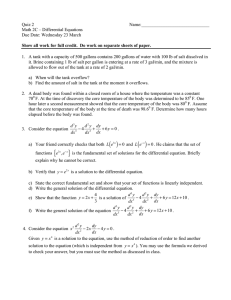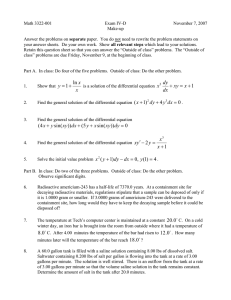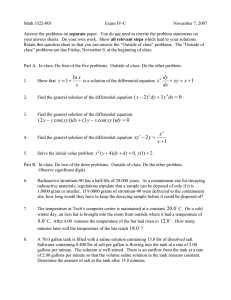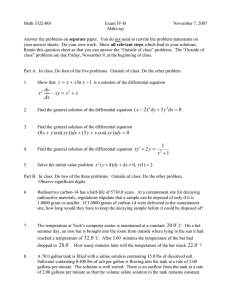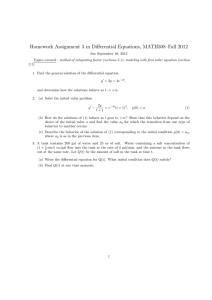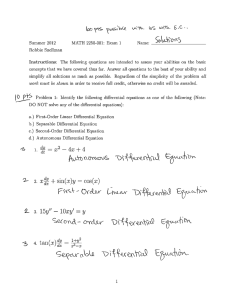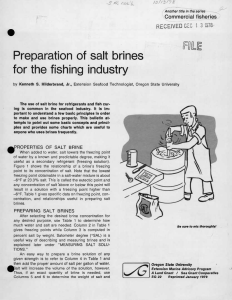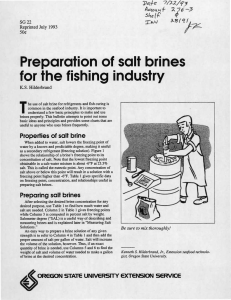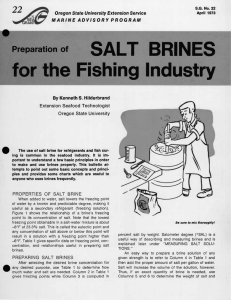Chapters 1 and 2 Review Math 2250 September 12, 2008 Name:
advertisement
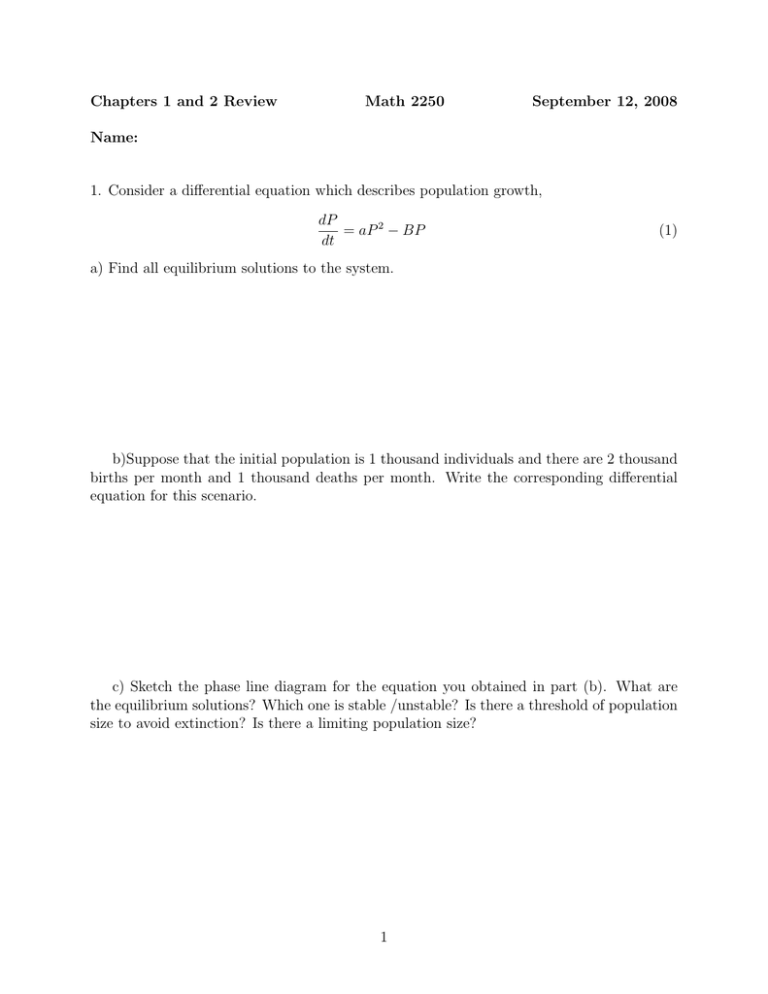
Chapters 1 and 2 Review Math 2250 September 12, 2008 Name: 1. Consider a differential equation which describes population growth, dP = aP 2 − BP dt (1) a) Find all equilibrium solutions to the system. b)Suppose that the initial population is 1 thousand individuals and there are 2 thousand births per month and 1 thousand deaths per month. Write the corresponding differential equation for this scenario. c) Sketch the phase line diagram for the equation you obtained in part (b). What are the equilibrium solutions? Which one is stable /unstable? Is there a threshold of population size to avoid extinction? Is there a limiting population size? 1 2. Solve the following initial value problem: 2x2 y + x3 y 0 = 1, y(1) = 1 What is the form of this differential equation? What is the reason you picked the method you did in order to solve this problem? 2 3. A brine tank holds 15000 gallons of continuously mixed liquid. Let x(t) be the amount of salt (in pounds) in the tank at time t. Brine is flowing in and out at 150 gallons per hour and the concentration of the salt flowing in is 1 pound per 10 gallons of water. Find the differential equation for x(t) and explain how you get this equation. Find the solution assuming that there is no salt in the water inside the tank initially. what is the limiting amount of salt as t approaches infinity? 3 4. Solve the following initial value problems: a) y 0 = −2y, y(0) = 10 b) y 0 = y 2 sin(x), y(0) = 1 c) y 0 + 3x2 y = 6x2 , y(0) = 3 d) y 0 = 6e2x−y , y(0) = 0 4 5. A driver involved in an accident claims he was going only 25 mph. When police tested his car, they found that when its brakes were applied at 25 mph, the car skidded only 45 feet before coming to a stop. But the driver’s skid marks at the accident scene measured 210 feet. Assuming the same (constant) deceleration, determine the speed he was actually traveling just prior to the accident. 6. a) Derive the solution of the logistic initial value problem P 0 = kP (M − P ), P (0) = P0 . What happens as t approaches infinity? How does this depend on whether 0 < P0 < M or 0 < M < P0 ? b) Derive the solution of the extinction-explosion initial value problem P 0 = kP (P − M ), P (0) = P0 . What happens as t approaches infinity? How does this depend on whether 0 < P0 < M or 0 < M < P0 ? 7. The acceleration of a Maserati is proportional to the difference between 250 km/h and the velocity of this sports car. If this machine can accelerate from rest to 100 km/h in 10 s, how long will it take for the car to accelerate from rest to 200 km/h? 5
